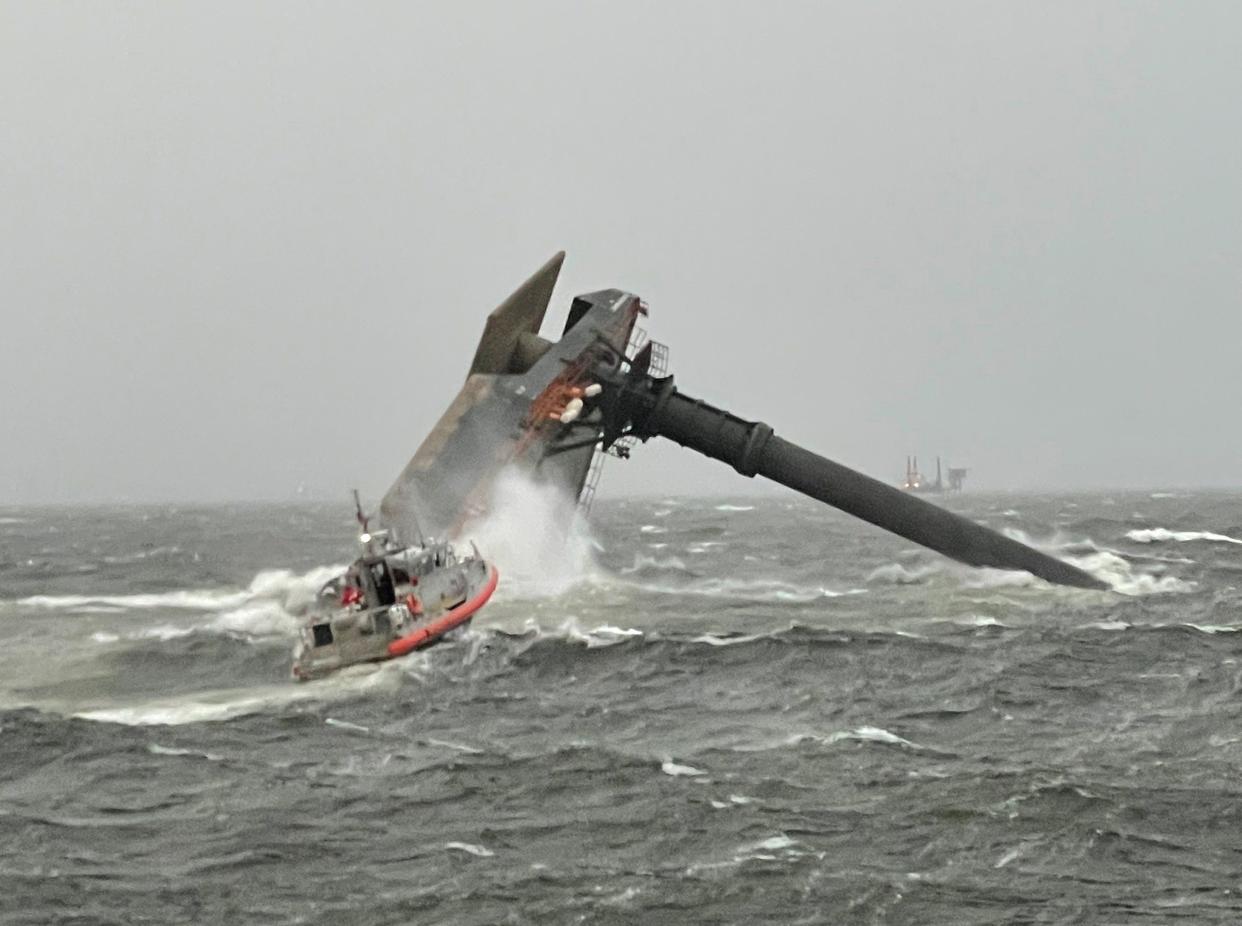Flawed weather warning system blamed in fatal Seacor Power oilfield boat capsizing

A new federal report cites flawed weather warning systems as key factors that led to last year's deadly capsizing of an oilfield boat in hurricane-force winds about 8 miles south of Port Fourchon.
Thirteen of the 19 crew members aboard the Seacor Power, including its captain, died after the offshore vessel capsized in the Gulf of Mexico after leaving Port Fourchon. Known as a liftboat, the vessel had three 256-foot-long legs that could be lowered to the seafloor, converting the ship to an offshore platform for work at oil and gas platforms.
The boat had been chartered by Talos Energy for work on a Gulf platform when it was hit by high winds in rough seas and capsized April 13, 2021.
"We found that the captain’s decision to get underway on the day of the casualty was reasonable and was not influenced by commercial pressure," the National Transportation Safety Board says in its final investigative report, issued Tuesday. "However, weather information that Seacor Marine provided to the Seacor Power’s crew was insufficient for making weather-related decisions about the liftboat’s operation."
However, though the captain, 63-year-old David Ledet of Thibodaux, was not aware of the severe thunderstorm watch before leaving port, "it likely would not have changed his decision, the agency says.
The report says none of the following are to blame in the tragedy: mechanical and electrical systems, the boat's watertight integrity, crew experience and qualifications or fatigue.
NTSB report on Seacor Power capsizing by The Courier and Daily Comet on Scribd
Among the NTSB's other findings:
The weather forecast Seacor marine provided to the liftboat's crew the morning of the capsizing was insufficient for making weather-related decisions about the vessel's operation.
"Additionally, due to a Coast Guard broadcasting station outage, the Seacor Power crew did not receive a National Weather Service Special Marine Warning notifying mariners of a severe thunderstorm that was approaching."
A lack of low-altitude radar data prevented the National Weather Service from identifying and forecasting heavy winds that hit the vessel. The report recommends that the Weather Service, the Federal Aviation Administration and Air Force jointly consider lowering radar angles to improve coverage.
The Seacor Power had begun to lower its stabilizing legs and was trying to turn to face heavy winds when it overturned. The boat's position, speed through the water, shifting cargo and movement of the boat's legs may havecontributed to its capsizing
The Coast Guard did not effectively use available information to verify the location of the Seacor Power’s emergency radio beacon alerts, which led to a delay in dispatching search and rescue teams and notifying Good Samaritan vessels.
Inaccurate information about the Power’s location provided to the Coast Guard by a Seacor Marine employee when contacted regarding the boats emergency position radio beacon alert contributed to the delayed response.
"High winds and heavy seas, combined with underwater and overhead obstructions, prevented both surface and air resources from getting close enough to the vessel to rescue personnel directly from the wreck, whichcontributed to the loss of life."
'Please calm the seas'Seacor Power survivor details ship rolling and being rescued
More:Fallen Thibodaux boat captain remembered as one of the best
The NTSB report makes multiple recommendations for the Coast Guard. Among them:
Develop a procedure to let mariners know when navigational broadcasting is out.
Update regulations to require that liftboats be constructed for greater stability.
Develop procedures to involve participation of commercial, local government and nonprofit air rescue providers in rescue operations.
Require that everyone employed on vessels in coastal, Great Lakes and ocean service have personal locater beacon devices. If the crew members aboard the Seacor Power had been required to carry such devices, "their chances of being rescued would have been enhanced,” the report says.
“We’ve been waiting five years for the Coast Guard to implement our recommendation on personal locator beacons — a call to action we’re renewing today for the fourth time,” NTSB Chairwoman Jennifer Homendy said in a news release. “Mariners’ safety can’t wait, which is why I’m urging employers to invest in personal locator beacons for their crew. As the Seacor Power tragedy shows, the lifesaving promise of these devices cannot be overstated.”
–The Associated Press contributed to this story.
This article originally appeared on The Courier: Gaps in weather warning system blamed in deadly Seacor Power capsizing

